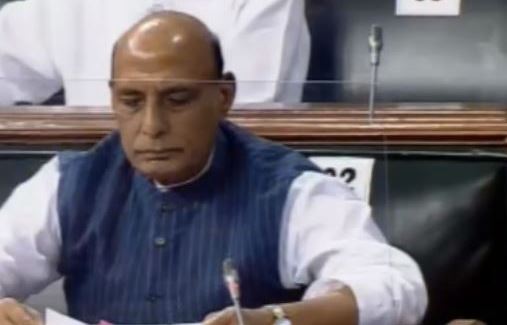
India and China are yet to resolve their boundary issue. China does not accept the customary and traditional alignment of the boundary between both countries, said Defence Minister Rajnath Singh while addressing the Parliament on the continuing standoff between Indian and Chinese troops along the LAC in eastern Ladakh.
“The two countries had engaged in discussions during 1950s-60s but these efforts could not yield a mutually acceptable solution,” the Defence Minister said.
“China continues to be in illegal occupation of approximately 38,000 sq kms in Ladakh, In addition, under the so-called Sino-Pakistan ‘Boundary Agreement’ of 1963, Pakistan illegally ceded 5,180 sq. km. of Indian territory in Pakistan Occupied Kashmir to China,” the defence minister said.
Both India and China have formally agreed that the boundary question is a complex issue which requires patience and have committed to seeking a fair, reasonable and mutually acceptable solution through dialogue and peaceful negotiations, he said.
The Defence Minister said that there is no commonly delineated Line of Actual Control (LAC) in the border areas between India and China and there is no common perception of the entire LAC. Therefore, in order to ensure peace and tranquility in the border areas, especially along the LAC, the two countries have concluded a number of agreements and protocols.
“Under these agreements, the two sides have agreed to maintain peace and tranquility along the LAC without prejudice to their respective positions on the alignment of the LAC as well as on the boundary question. It is on this basis, that our overall relations also saw considerable progress since 1988. India’s position is that while bilateral relations can continue to develop in parallel with discussions on resolving the boundary question, any serious disturbance in peace and tranquility along the LAC in the border areas is bound to have implications for the positive direction of our ties,” he added.
By apprising the House of the developments this year, Rajnath said, “since April, we had noticed a buildup of troops and armaments by the Chinese side in the border areas adjacent to Eastern Ladakh. In early May, the Chinese side had taken action to hinder the normal, traditional patrolling pattern of our troops in the Galwan Valley area, which resulted in a face-off. Even as this situation was being addressed by the Ground Commanders as per the provisions of our bilateral agreements and protocol.”
“In mid-May the Chinese side made several attempts to transgress the LAC in other parts of the Western Sector. This included Kongka La, Gogra and North Bank of Pangong Lake. These attempts were detected early and consequently responded to appropriately by our armed forces,” he added.
“We made it clear to the Chinese side both through diplomatic and military channels that China was, by such actions, attempting to unilaterally alter the status quo. It was categorically conveyed that this was unacceptable,” Rajnath said.
Given the growing friction along the LAC, the Senior Commanders of the two sides in a meeting on June 6 agreed on a process of disengagement that involved reciprocal actions. Both sides also agreed to respect and abide by the LAC and not undertake any activity to alter the status quo. However, in violation of this the Chinese side created a violent face off on June 15th at Galwan. Our brave soldiers laid down their lives and also inflicted costs including casualties on the Chinese side, Rajnath said.











